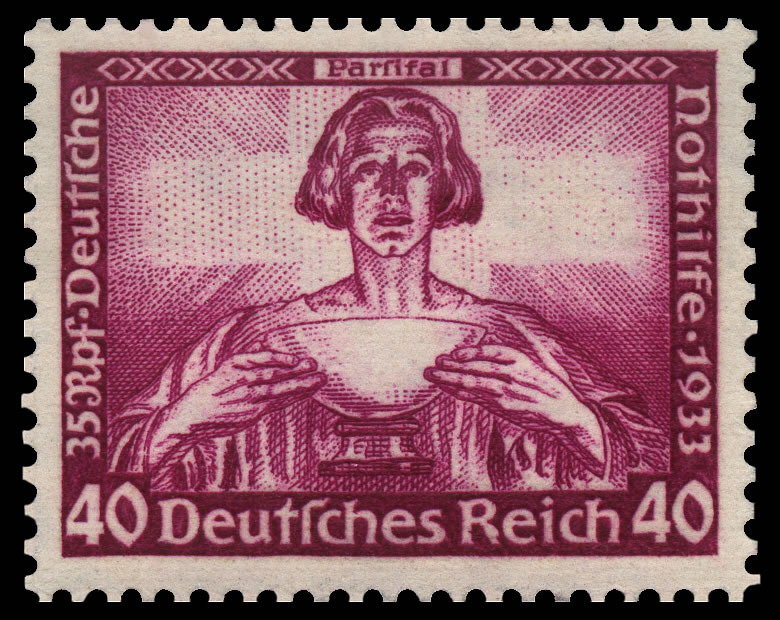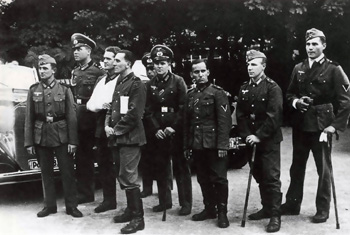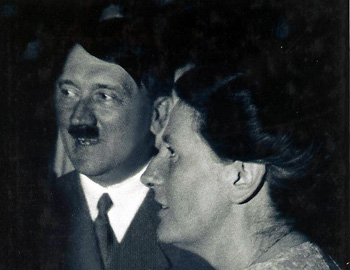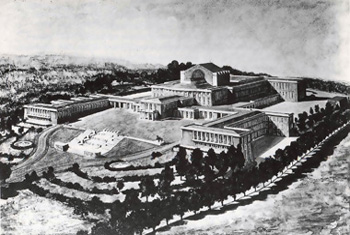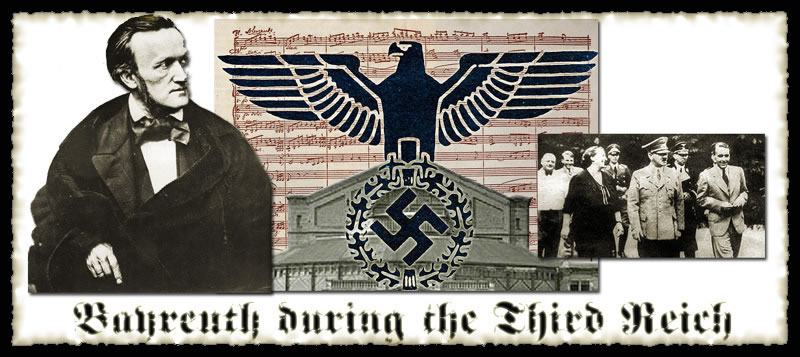
 |
|
In this remarkable poster, Hitler, portrayed as a kind of neo-Parsifal, carries a German standard, while a dove descends from the heavens. |
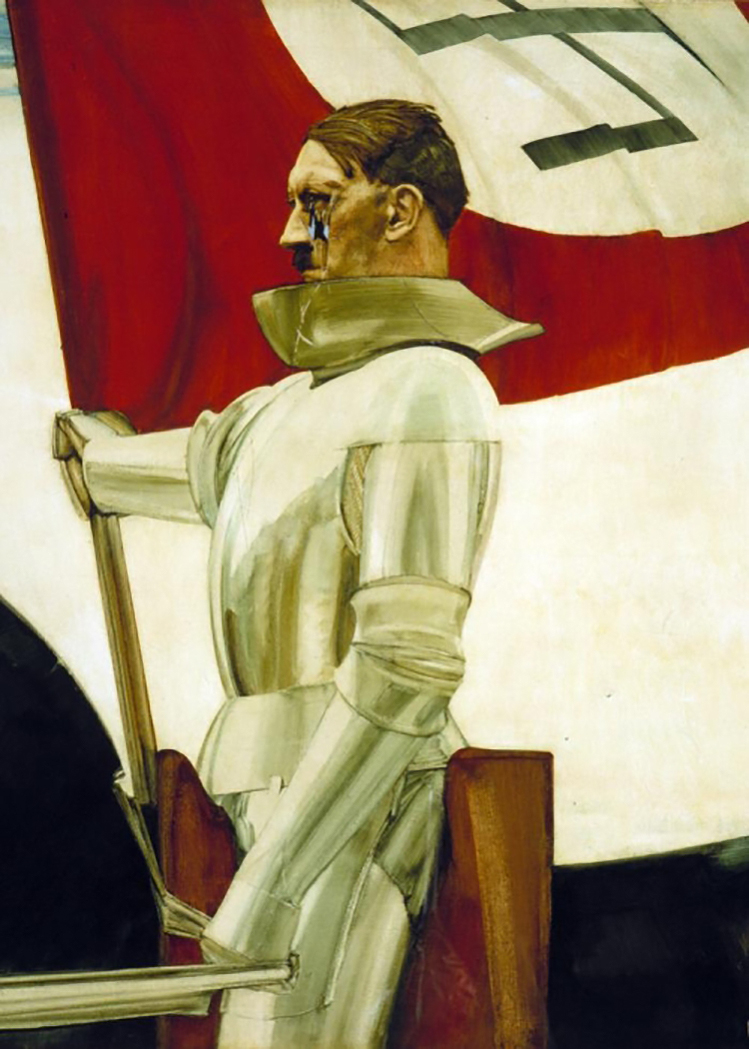 |
| In another remarkable poster from 1938, Hitler is portrayed as one of the "banner carriers:" a knight closely resembling Lohengrin |
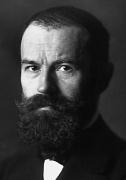 |
Around the time that the Nazis came to power, the Bayreuth holy of holies still existed: the original Paul von Joukowsky sets used at the premiere of Parsifal. They were still in use at the Festspielhaus even though they were falling apart and were dangerous to the singers. Realistically, the time had come to replace the production, and the logical person to design the sets would be Emil Preetorius. A petition began circulating against this decision. After all, this was the scenery "on which the eyes of the Master had reposed," and the conservative faction at Bayreuth believed that the scenery needed to be kept and revered like a holy icon. Over a thousand signatures were collected, including those of Arturo Toscanini and Richard Strauss. Winifred Wagner sent the petition to Hitler along with a pamphlet accusing Preetorius of being "un-German" and "under Jewish influence." Hitler, on the other hand, favored a new Bayreuth production of Parsifal, and selected Alfred Roller to design it. The Führer was a great admirer of Roller's work in Vienna, and the two had met when Hitler was an aspiring artist. | 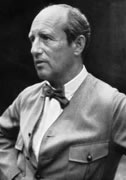 |
Alfred Roller |
"Parsifal, more than the Ring was the Gospel of National Socialism." -- Robert W. Gutman |
Emil Preetorius |
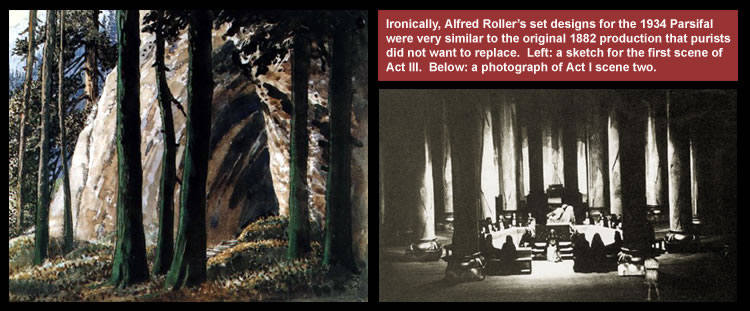
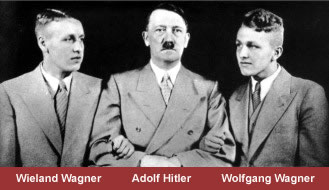 |
Following all the controversy. Alfred Roller's production premiered in 1934, and it was a disappointment. There was really very little that the great designer did that was different from the sacrosanct sets that so many did not want to replace. The temple cupola in the second scene of Act One disappeared, and this made many conservatives very disappointed. Winifred once again appealed to Hitler that there should be yet another new production of Parsifal to replace this fiasco. Hitler agreed and suggested that Wieland Wagner design the new sets. Hitler had always revered Siegfried's son because he was a direct descendant of the Master. Once the war began, Hitler gave orders that Wieland should be permanently exempt from military service. Wieland's 1937 Parsifal was such an old fashioned approach to the opera that it was deemed even less successful than the Roller production. It would not be until 1951 and the re-opening of the Bayreuth Festival that Wieland would achieve artistic success with this work. |
In 1940, Adolf Hitler arrives at Bayreuth. Also, footage of a 1943 Bayreuth performance of Die Meistersinger |
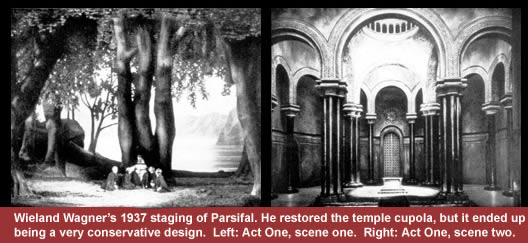
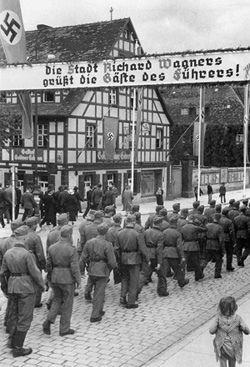 |
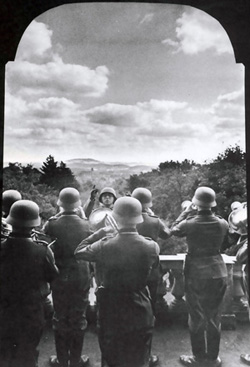 |
| Nazis marching to a performance at the Festspielhaus. The banner reads "Richard Wagner's city greets the Führer's guests." | During the war years Nazi presence was everywhere in Bayreuth. SS troops sound the fanfare from the Festspielhaus balcony. |
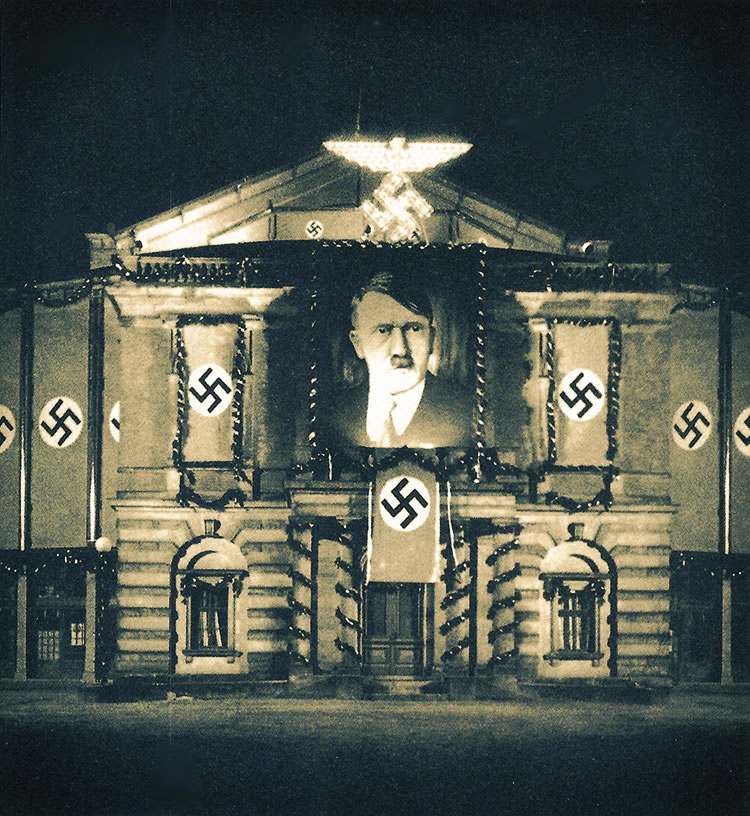
The Festspielhaus decorated and illuminated to celebrate Hitler's birthday: April 20, 1939 |
In a clip from 1942, conductor Wilhelm Furtwangler conducts the prelude to Die Meistersinger. |
|

| Left: Adolf Hitler in black tie salutes the crowd from one of the windows of the Festspielhaus. Right: Hitler walks the grounds of the Festspielhaus with Winifred Wagner and her children Wieland and Wolfgang. |
|
At the start of the war, the Ministry of Propaganda prohibited performances of Parsifal in Germany. Following the controversy over replacing the original sets, the ban on Parsifal proved puzzling. No official reason was given for banishing the work from Germany's stages. Parsifal had fueled Hitler's imagination, and had provided the Nazis with the mythic Germanic Christian idealogical background that was easy for the people to understand. However, as the dead and wounded were coming back from the front, presenting an opera where one of the main characters is suffering from a mortal wound was obviously not very good P.R. for the war cause. Wagner authority Robert R. Gibson has offered further reasons for the ban on Parsifal. He argues that the opera's main character learns pacifism throughout his long journeys, and ultimately becomes a compassionate human being. These traits were considered feminine attributes, and not worthy of the idealized Nazi conception of the Aryan male. The author adds that the ban occurred at the time when the Nazis were busy suppressing homosexuality. Propaganda Minister Josef Goebbels had already denounced priestly and monastic celibate life in a speech in 1937. Parsifal, with its representation of a community of quasi-religious brothers who embrace (The SS were forbidden to touch one another), must have been anathema to the Third Reich. Top: Casualties of war attend a performance at Bayreuth. Middle: Adolf Hitler and Winifred Wagner were in frequent contact, and he would spend time in Bayreuth whenever he could. Bottom: A sketch for Hitler's proposed new Festspielhaus. It was to be inaugurated at a peace festival celebrating Germany's military victory of World War II. |
